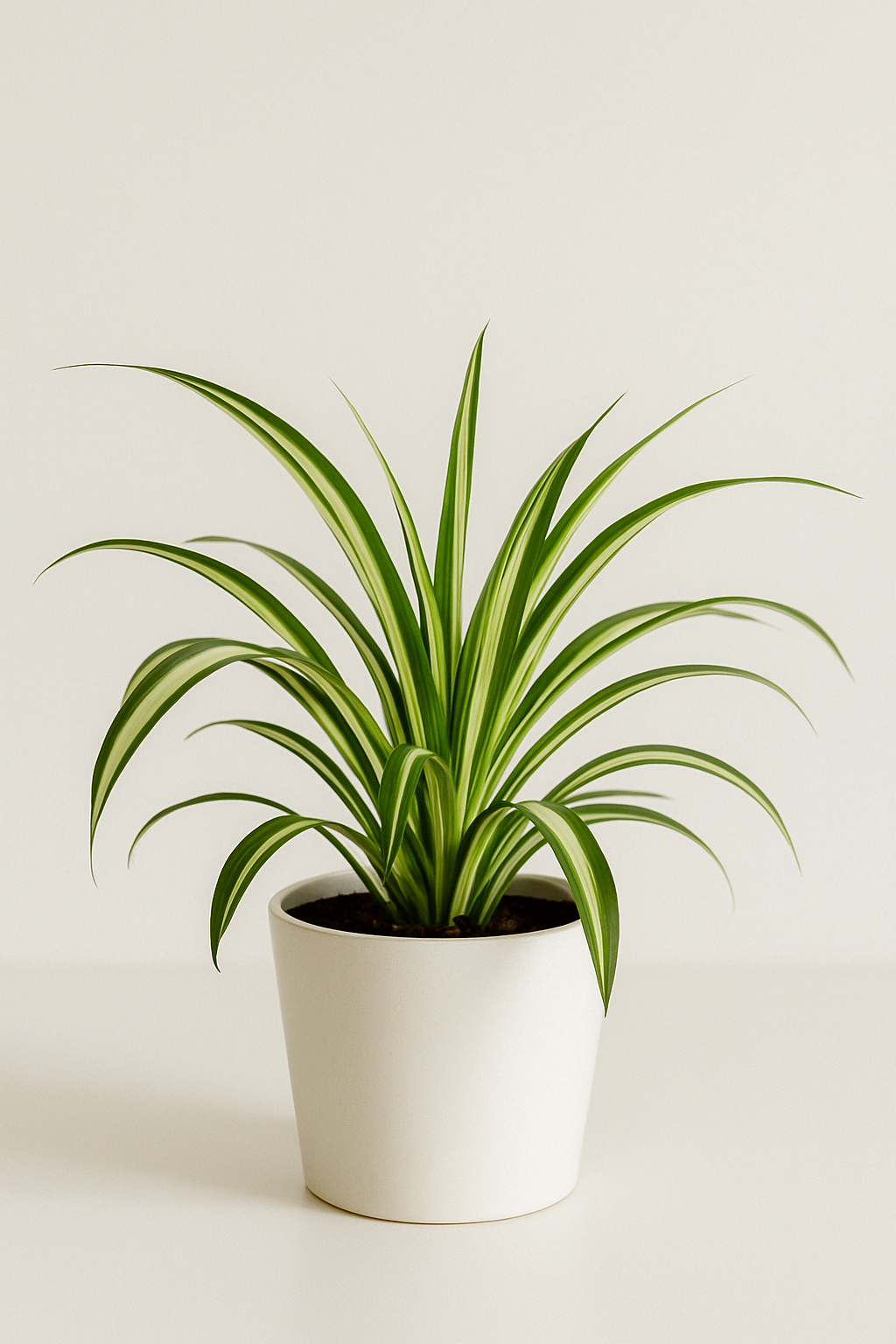Spider Plant

Scientific name: Chlorophytum comosum
☘️ Toxicity: Safe for cats
☀️ Ideal light: Partial shade or bright indirect light
💧 Watering: Moderate; keep soil slightly moist
The Spider Plant is one of the easiest and most resilient ornamental houseplants. Its long, arching green leaves with pale stripes create an elegant, airy appearance — perfect for hanging baskets or shelves. It’s also an excellent air-purifying plant and completely safe for cats.
Essential care
- Light: Prefers bright, indirect light but tolerates partial shade.
- Water: Water when the top layer of soil begins to dry; avoid waterlogging.
- Substrate: Light and well-draining mix (potting soil, coarse sand, and compost work well).
- Environment: Grows well indoors with good airflow; suitable for hanging or tabletop pots.
- Fertilization: Feed monthly during spring and summer with a balanced fertilizer (e.g., NPK 10-10-10).
Common problems
- Brown tips: Often due to low humidity or chlorine in tap water.
- Yellow leaves: Caused by overwatering or poor drainage.
- Scale insects: Remove manually with cotton and alcohol; improve ventilation.
Propagation
- Plantlets (“pups”): The baby offshoots growing on long stems can be rooted in water or soil.
- Division: Separate mature clumps during repotting, ensuring each section has roots attached.
Cat safety
- Classification: Non-toxic to cats.
- Note: Some cats may chew the leaves out of curiosity, which can cause mild stomach upset but is not dangerous.
💡 The Spider Plant was listed by NASA as one of the top indoor plants for removing formaldehyde and carbon monoxide from the air.
Quick checklist
- ☀️ Bright indirect light or partial shade
- 💧 Moderate watering, avoid overwatering
- 🪴 Light, well-draining soil
- 🌫️ Average to high humidity
- 🐾 Safe for cats